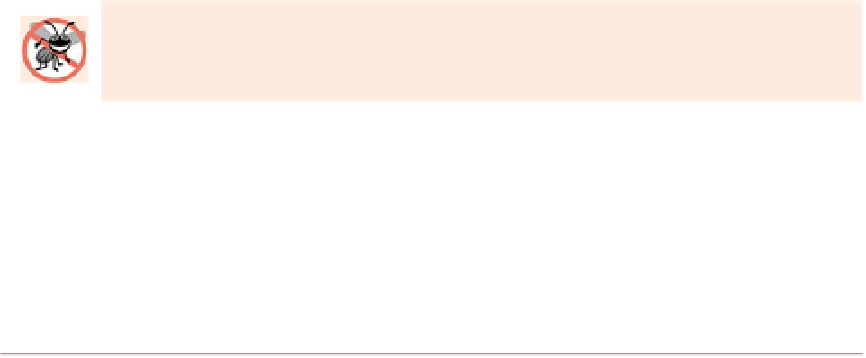Java Reference
In-Depth Information
Placing Arithmetic Expressions in a
for
Statement's Header
The initialization, loop-continuation condition and increment portions of a
for
statement
can contain arithmetic expressions. For example, assume that
x
=
2
and
y
=
10
. If
x
and
y
are not modified in the body of the loop, the statement
for
(
int
j = x; j <=
4
* x * y; j += y / x)
is equivalent to the statement
for
(
int
j =
2
; j <=
80
; j +=
5
)
The increment of a
for
statement may also be
negative
, in which case it's a
decrement
, and
the loop counts
downward
.
Using a
for
Statement's Control Variable in the Statement's Body
Programs frequently display the control-variable value or use it in calculations in the loop
body, but this use is
not
required. The control variable is commonly used to control repe-
tition
without
being mentioned in the body of the
for
.
Error-Prevention Tip 5.5
Although the value of the control variable can be changed in the body of a
for
loop, avoid
doing so, because this practice can lead to subtle errors.
UML Activity Diagram for the
for
Statement
The
for
statement's UML activity diagram is similar to that of the
while
statement
(Fig. 4.6). Figure 5.4 shows the activity diagram of the
for
statement in Fig. 5.2. The
diagram makes it clear that initialization occurs
once
before
the loop-continuation test is
evaluated the first time, and that incrementing occurs
each
time through the loop
after
the
body statement executes.
Initialize
control variable
int
counter =
1
[counter <= 10]
Display the
counter value
Increment the
control variable
[counter > 10]
Determine whether
looping should
continue
counter++
System.out.printf(
“%d ”
, counter);
Fig. 5.4
|
UML activity diagram for the
for
statement in Fig. 5.2.








































